We had a long run on the bus, almost to Widnes. It was an interesting ten miles or more, through Aigburth, Garston, the airport and Hale Village with its thatched cottages. The sun shone most of the day, but there was a strong cold breeze. Pickering’s Pasture Local Nature Reserve was originally a saltmarsh, but it was used as a tip by Halton Borough Council from the 1950s to the 1980s, until it was reclaimed. Now it is mostly a huge wildflower meadow, edged with native trees, which looks out over the River Mersey and the Widnes-Runcorn bridges.

Most of the interest today was in the flowers. Their meadow isn’t a showy “poppies-and-cornflower” type, but one that has been slowly maturing for several years. At first glance it was simply Clover and Buttercups, mixed with Yellow Rattle and patches of Ox-eye Daisy, Bird’s-foot Trefoil and Meadow Cranesbill, but more was revealed as we ambled slowly along the western edge. There were hundreds of Orchids scattered through the tangle. I make no attempt to identify the commoner ones, and they are all said to hybridise anyway.

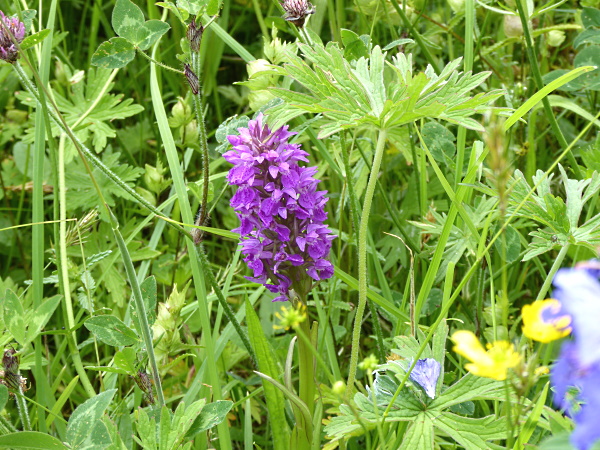
Our best find was a little crimson pea-flower with leaves like grass. I think it was Grass Vetchling Lathyrus nissolia. It’s a native annual, said to be scarce, and it’s on the Rare Plant Register. Some websites say it seems to be on the increase, possibly because it is included in wildflower seed products.
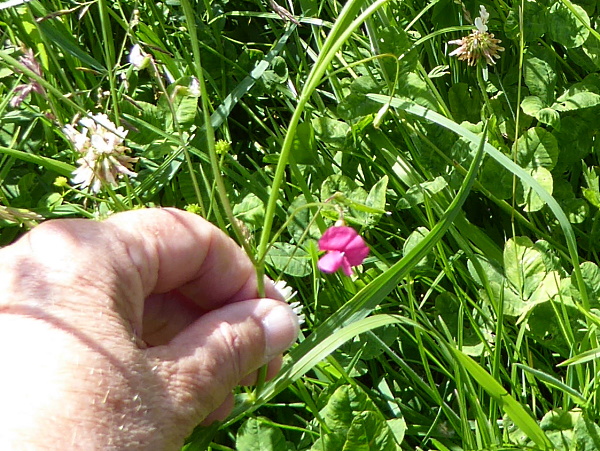
A low-growing red flower was probably Red Bartsia Odontites vernus. It thrives on low-fertility soils and like Yellow Rattle is partly parasitic, gaining extra nutrients from the roots of its nearby host grasses.

We puzzled over this long yellow flower head. These tall yellows always confuse us. It wasn’t Melilot, Weld or Mignonette and I looked it up at home, deciding it was Agrimony Agrimonia eupatoria.
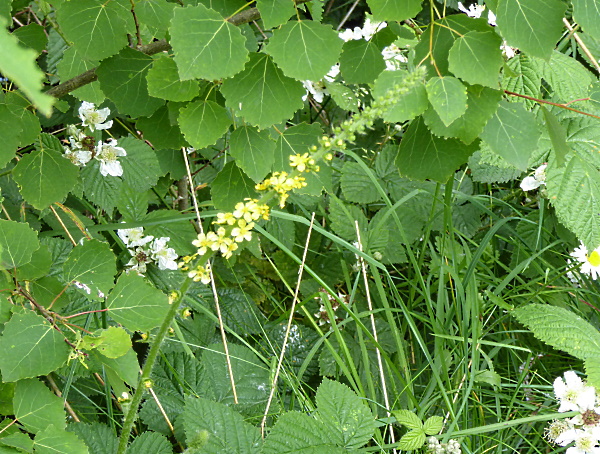
There was a single patch of Lesser Stichwort, with its tiny white flowers, less than a centimetre across.
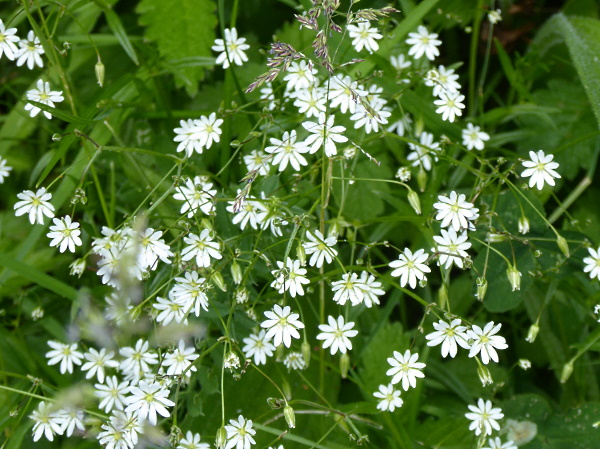
The western edge is mostly Brambles backed by Field Maple. The maples were setting seed already, and the wings on the pairs of seeds stick straight out to either side, like arms spread wide.
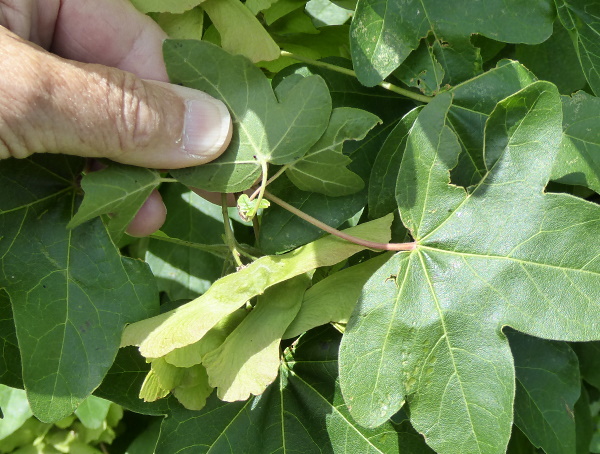
There is a patch of Aspen here,and I’m sure there wasn’t as much of it a few years ago. It reproduces by suckering, and seems to be spreading rapidly, now stretching about 30 meters (90 feet) along the edge of a copse.
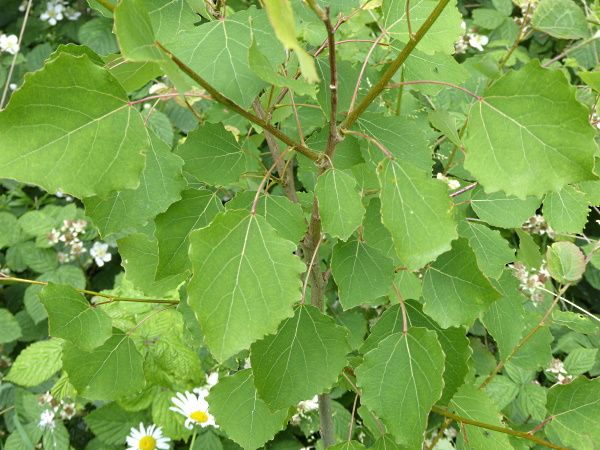
The Bramble was supporting several butterflies. We spotted a Speckled Wood, possibly a Gatekeeper, a Large White, a very ragged Small White, and this Meadow Brown, identified by the single white “pupil” in the black eye-spot. (Gatekeepers have two).
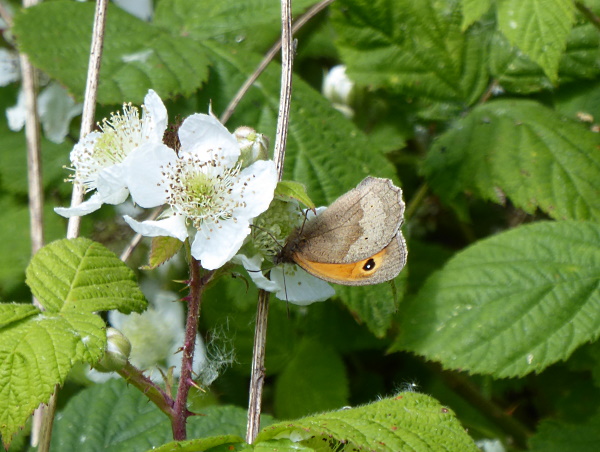
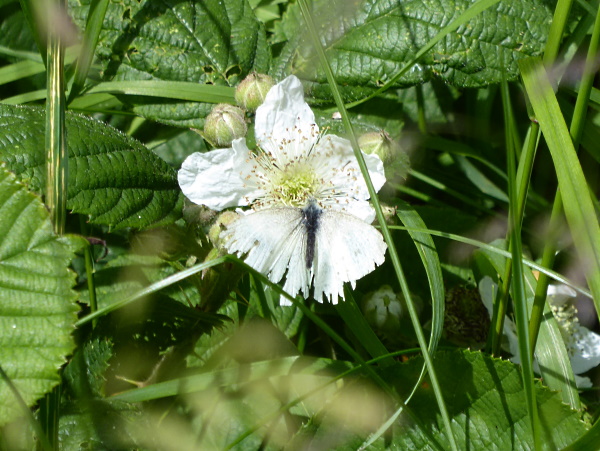
Both Swallows and Swifts were feeding over the meadow, but there were no birds of note viewable from the bird hide at the southern end. Nothing in the pool at all, but on the grassland beyond was a large flock of grazing Canada Geese. A few Shelduck, a couple of Greylag Geese and two Lapwings which flew over. Amongst the Canadas was one white goosewhich looked like it had escaped from a farmyard.
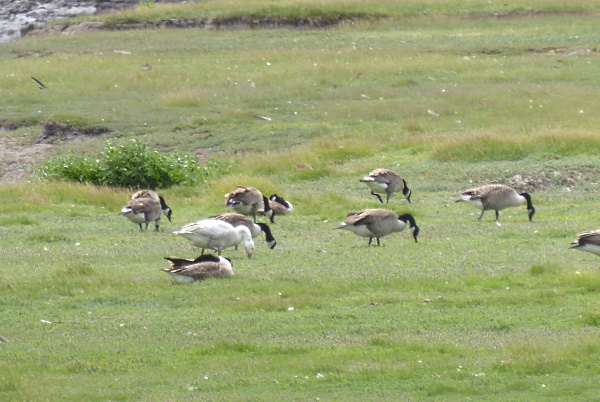
We returned along the river front. They had lit a beacon here for the Jubilee weekend, and the fire basket was still standing on its pole. Much of the shrubbery here was Japanese Rose Rosa rugosa, which is considered undesirable and invasive on the Sefton Coast, but is unobjectionable here.
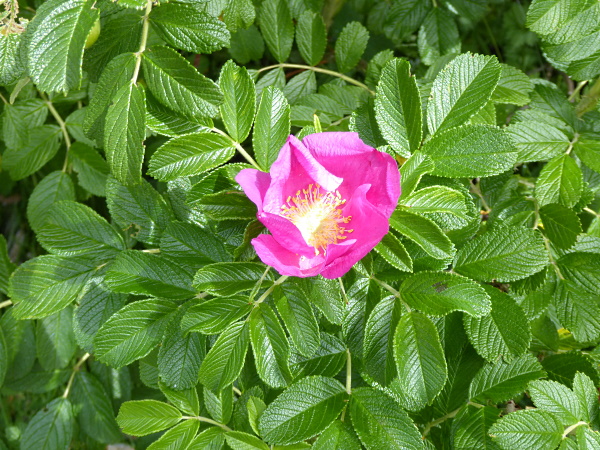
These lovely Foxgloves were in a wildflower garden area by the visitors centre.
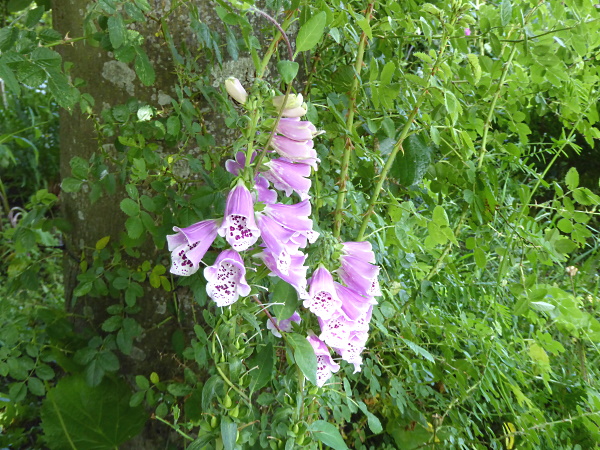
Public transport details: Bus 82A from Liverpool ONE bus station at 10.14, arriving Halebank / Mersey View at 11.15. Returned on the 82A from the opposite stop at 2.54, arriving Liverpool ONE at 3.50.
